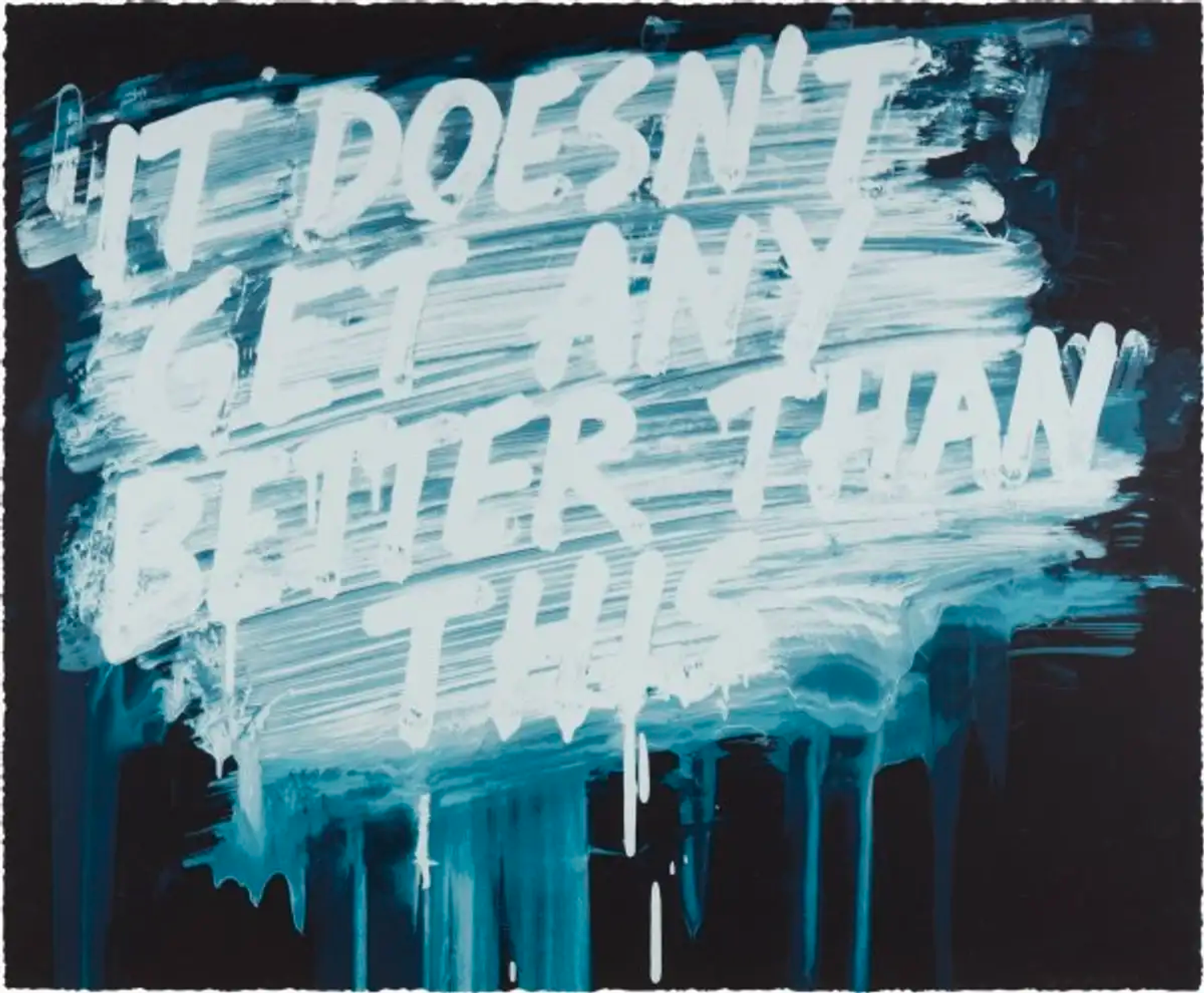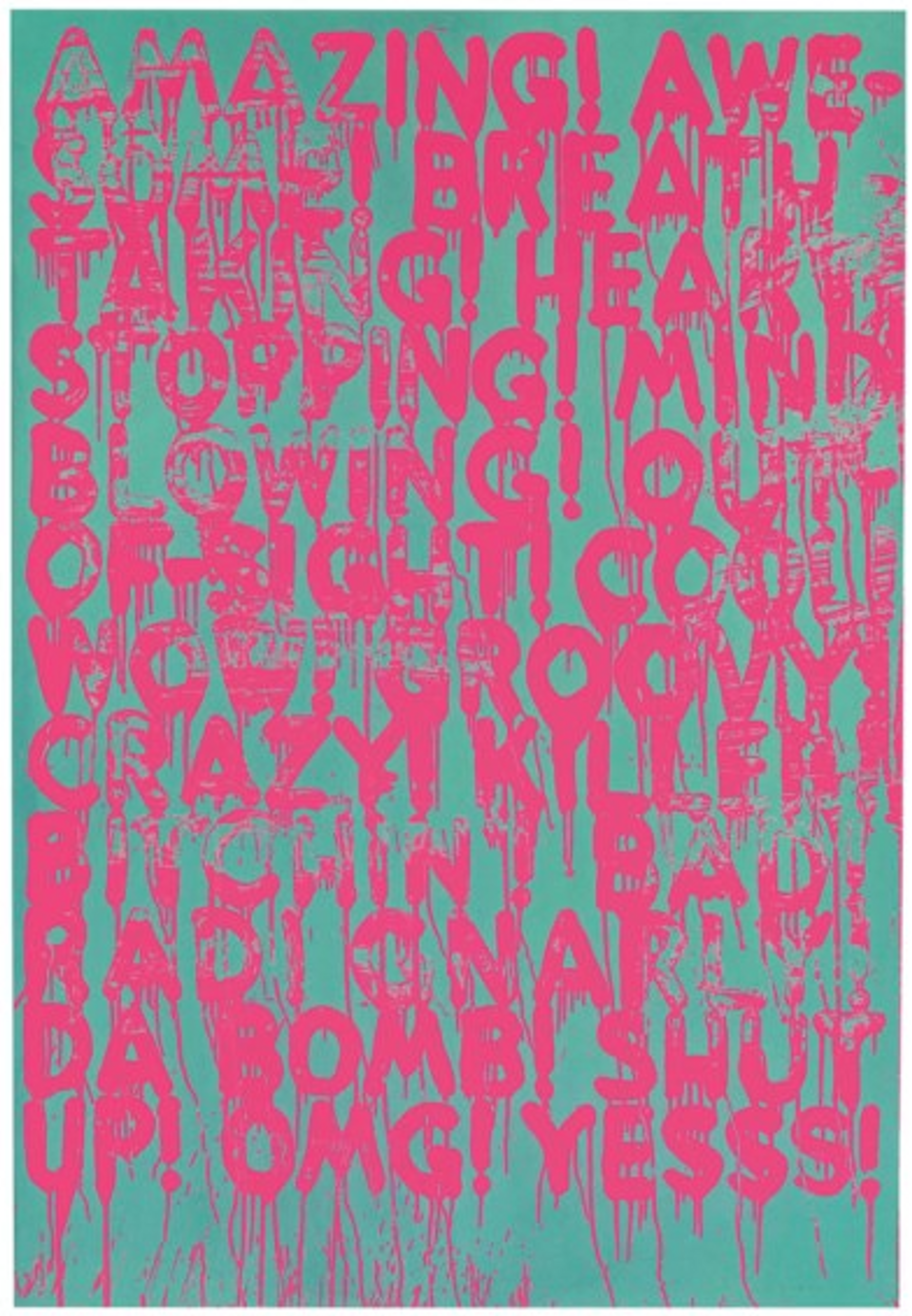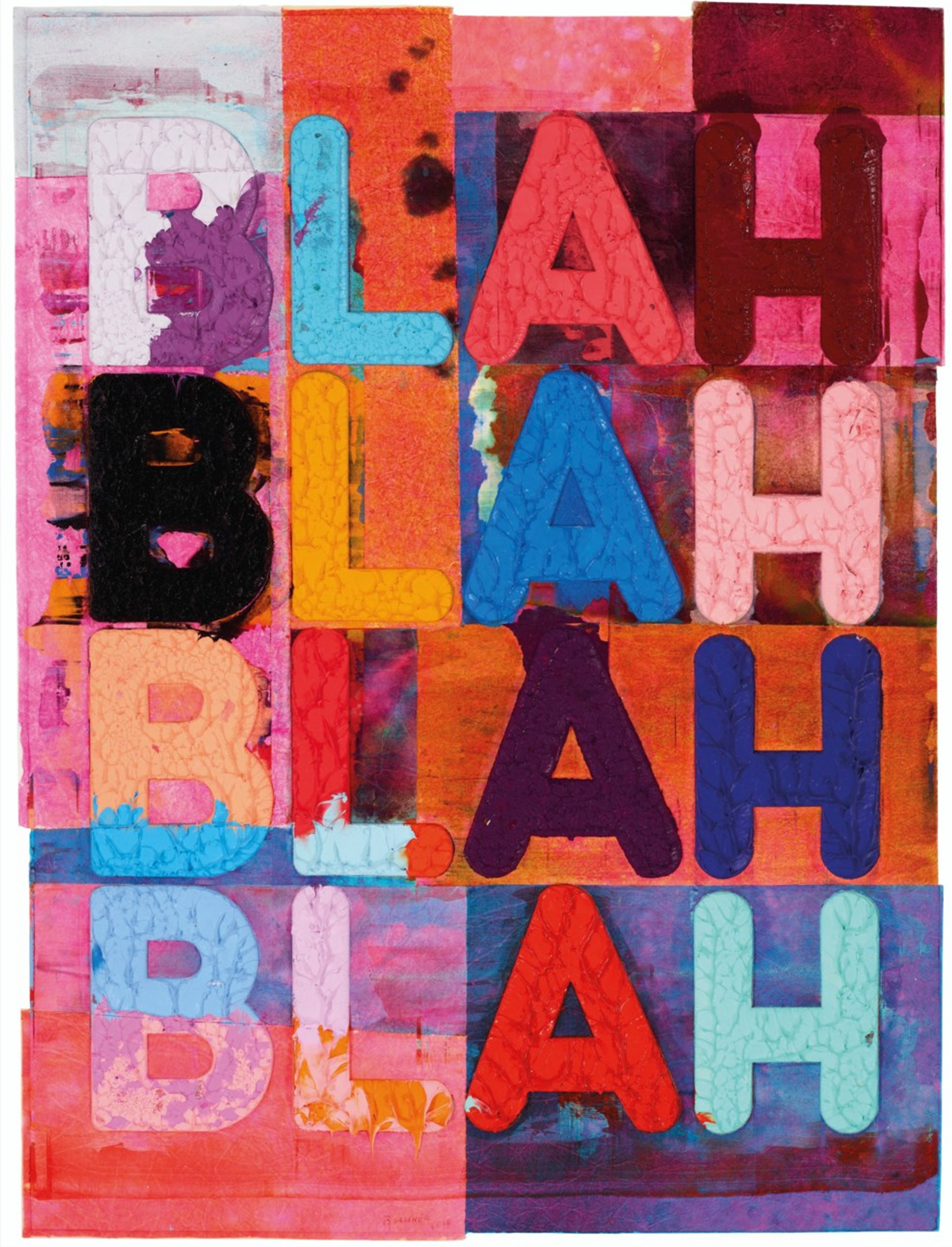 Image © Christie's / Blah Blah Blah © Mel Bochner 2018
Image © Christie's / Blah Blah Blah © Mel Bochner 2018Mel Bochner studied at Carnegie Mellon University
Mel Bochner began his artistic journey at Carnegie Mellon University, a renowned institution located in his hometown of Pittsburgh, Pennsylvania. In the 1960s, Bochner pursued his undergraduate studies at Carnegie Mellon, where he delved into the exploration of art and honed his skills as a young artist.
At Carnegie Mellon, Bochner had the opportunity to experiment with different mediums and techniques, refining his artistic style and developing a deep understanding of conceptual art. This period of study laid the foundation for his future exploration of language, perception, and the interplay between art and ideas.
 Image © Mel Bochner / Working Drawings and Other Visible Things on Paper Not Necessarily Meant to Be Viewed as Art Exhibition, School of the Visual Arts 1966
Image © Mel Bochner / Working Drawings and Other Visible Things on Paper Not Necessarily Meant to Be Viewed as Art Exhibition, School of the Visual Arts 1966Mel Bochner's 1966 exhibition was considered the first Conceptual Art exhibition
In 1966, Mel Bochner held a significant exhibition that marked a pivotal moment in his artistic career. Titled Working Drawings and Other Visible Things on Paper Not Necessarily Meant to Be Viewed as Art, the exhibition took place at the School of Visual Arts in New York City. Bochner curated an exhibition featuring a collection of working drawings sourced from his circle of artist friends and colleagues.
This groundbreaking exhibition of conceptual collaboration featured artworks by renowned artists such as Donald Judd, Robert Smithson, Eva Hesse, Sol LeWitt, Robert Mangold, Dan Graham, John Cage, and others. Additionally, the exhibition encompassed contributions from a diverse range of creatives, including composers, mathematicians, choreographers, and engineers.
Artistry runs in his family lineage
Mel Bochner's father played a significant role in his upbringing, influencing his artistic sensibilities and fostering his creative development. Bochner's father, Meyer Bochner, was a sign painter by profession. Growing up in a household where artistry was valued, Mel was exposed to the visual language of lettering and typography from an early age.
Growing up in a working-class Jewish family, Mel was exposed to the vibrant atmosphere of Pittsburgh's industrial landscape.
Mel Bochner took on various positions at Yale University
Mel Bochner's teaching career at Yale University left a lasting impact on both the institution and his students. From 1979 to 2001, Bochner served as a dedicated and influential professor in the School of Art, sharing his extensive knowledge and passion for art with aspiring artists.
Bochner assumed the role of Senior Critic in Painting and Printmaking and later served as an adjunct professor in 2001.
Mel Bochner transitioned to painting in the 1970s
Mel Bochner's approach to painting in the 1970s was marked by a departure from the purely visual and a shift towards the intellectual and linguistic aspects of art. He explored the use of words, numbers, and diagrams, often incorporating them directly onto the canvas. By incorporating language and mathematical elements, Bochner aimed to disrupt the conventional understanding of painting as a purely visual experience and introduce new ways of engaging with the artwork.
Bochner's innovative approach to painting left a lasting impact on the art world, influencing subsequent generations of artists and expanding the possibilities of the medium. His exploration of language and conceptualism within the realm of painting helped to redefine the boundaries of artistic expression.
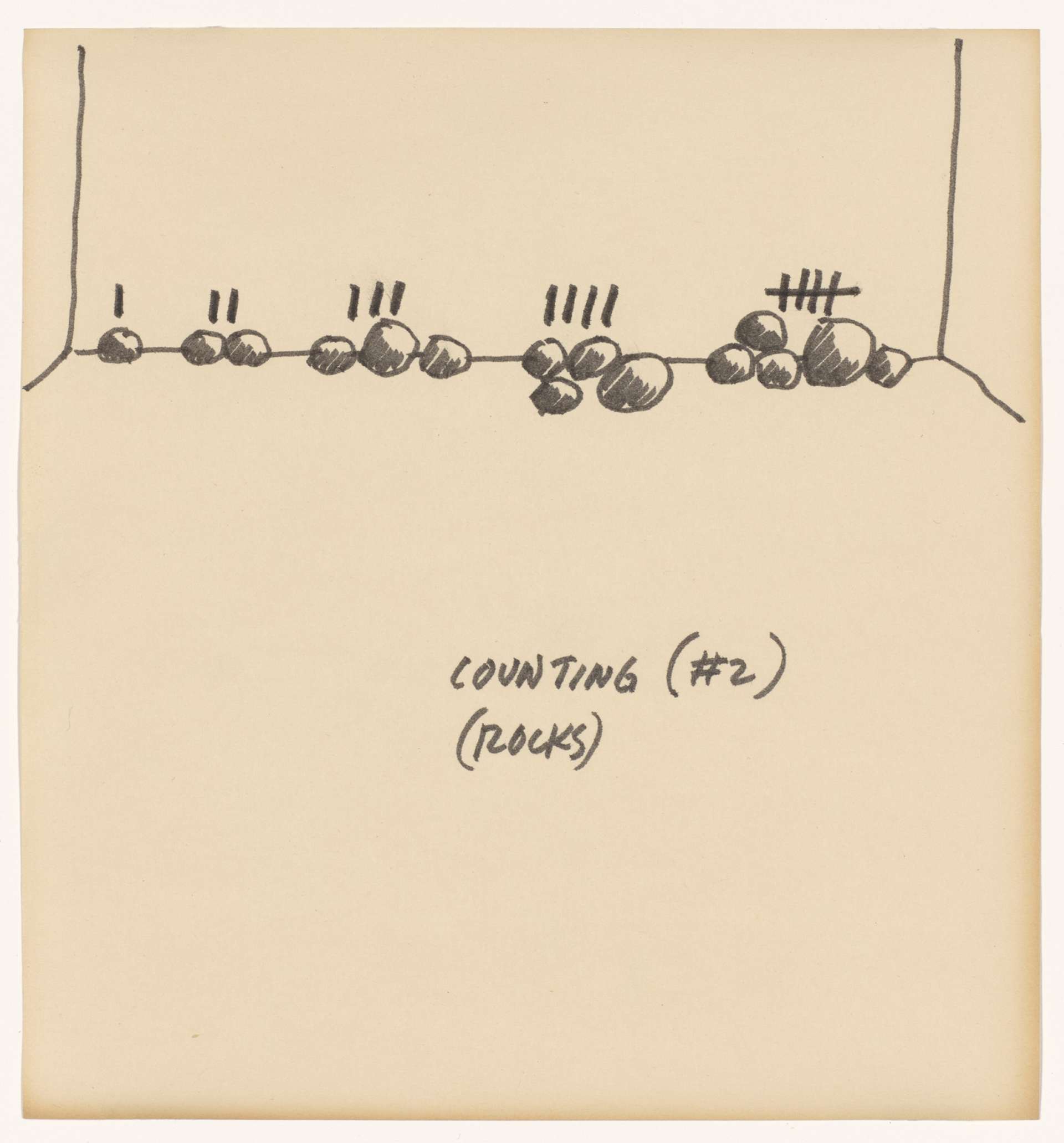 Image © MOMA / Counting Rocks © Mel Bochner 1969
Image © MOMA / Counting Rocks © Mel Bochner 1969Mel Bochner played a pivotal role in the Conceptual Art movement
Mel Bochner was a key figure in the Conceptual Art movement of the 1960s and 70s. Bochner was part of a group of artists who challenged the traditional notion of art as a physical object to be admired for its aesthetic qualities and instead sought to explore the ideas and concepts behind the object, often using language and text as their medium.
Bochner's early works were influenced by his interest in mathematics and logic, which he applied to create intricate geometric patterns. As his practice evolved, he incorporated language and words into his artwork, exploring the relationship between language, thought, and perception. His famous Thesaurus series, which began in the late 1960s, featured lists of synonyms used to create visual and conceptual associations between words.
Mel Bochner's early works often incorporate diagrams, charts, and mathematical systems
Mel Bochner's early artistic endeavours were characterised by incorporating diagrams, charts, and mathematical systems into his works. These elements played a significant role in his exploration of the relationship between visual art and intellectual concepts.
By incorporating mathematical systems into his artworks, Bochner aimed to blur the boundaries between art and science. His use of diagrams and charts added a visual complexity to his compositions and invited viewers to contemplate the underlying principles that govern our understanding of the world.
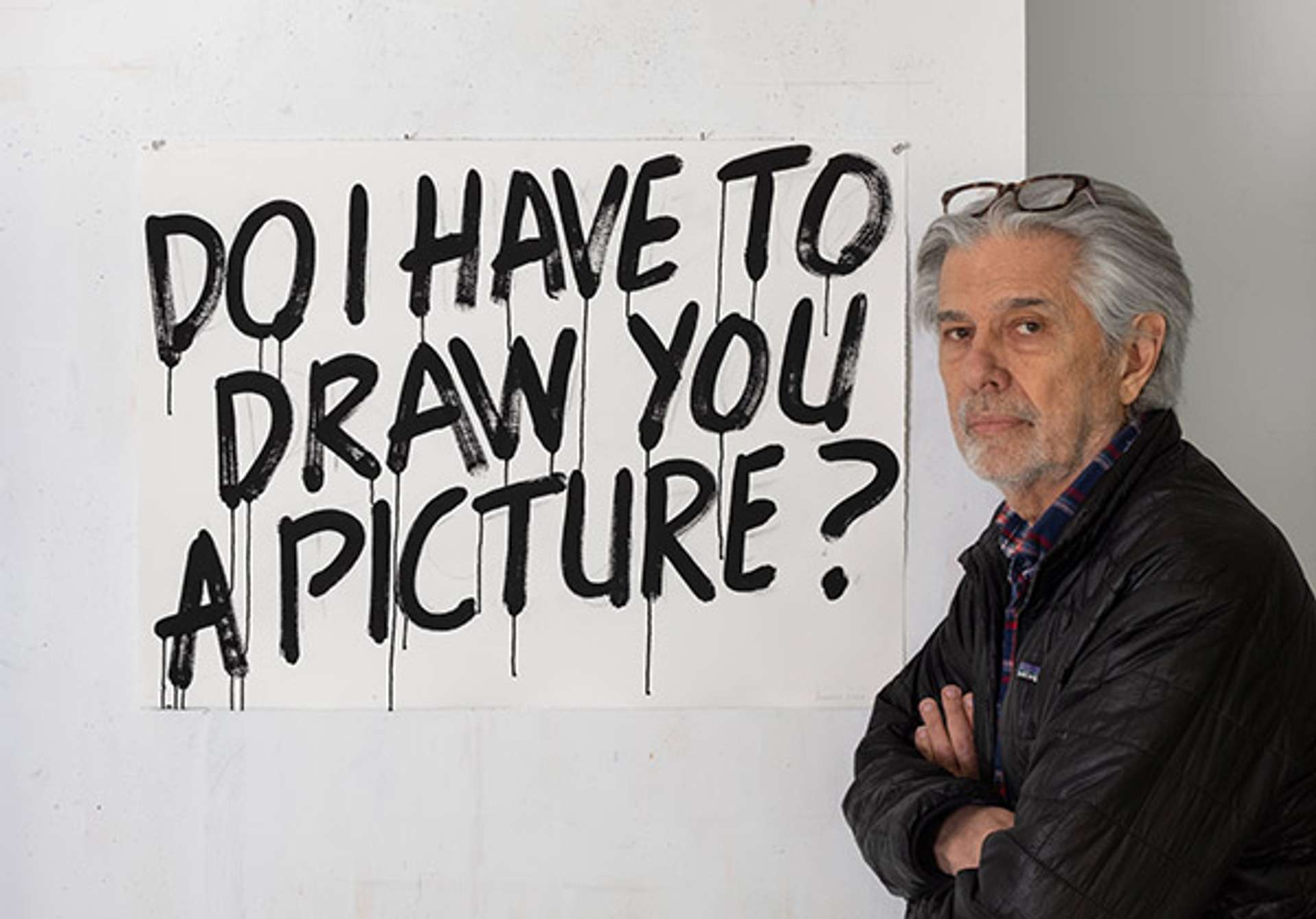 Image © National Gallery of Art / Mel Bochner © James Powers
Image © National Gallery of Art / Mel Bochner © James Powers His contributions to the art world have earned him numerous accolades, including the prestigious Guggenheim Fellowship in 1973
Mel Bochner's immense contributions to the art world have garnered him numerous prestigious accolades throughout his career. Bochner was awarded the highly esteemed Guggenheim Fellowship in 1973 in recognition of his groundbreaking contributions. This recognition from the Guggenheim Foundation further solidified his status as an influential artist and cemented his place among the artistic luminaries of his time.
Bochner's Guggenheim Fellowship stands as a testament to his artistic prowess and the enduring impact of his work on the art world.
Language and text are central to Mel Bochner's artwork
Mel Bochner's fascination with language stems from his belief in its power to shape perception and meaning. He employs linguistics: words, phrases, and textual elements to create visually striking compositions that invite contemplation and introspection.
By incorporating language into his art, Bochner blurs the line between visual and verbal communication, challenging viewers to question the inherent meanings and limitations of language itself. Language and text remain central to Bochner's artistic expression, enabling him to create visually compelling works that invite intellectual engagement and offer rich layers of interpretation.
Mel Bochner's work is exhibited extensively
Mel Bochner's artwork has been exhibited extensively nationally and internationally, making him a highly recognised and sought-after artist in the contemporary art world. His exhibitions have showcased the depth and breadth of his artistic practice, drawing critical acclaim and capturing the attention of art enthusiasts and collectors alike.
Bochner's artwork has been exhibited worldwide in renowned galleries, museums, and institutions. These include the Museum of Modern Art (MoMA) in New York, the Whitney Museum of American Art, the Art Institute of Chicago, Tate Modern in London, and the Centre Pompidou in Paris, among numerous others.


